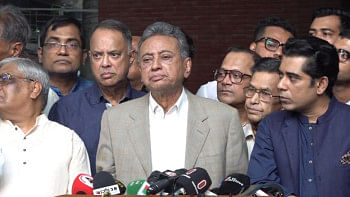Microcredit boosts job prospects of borrowers
Microcredit increases the employment opportunity of borrowers by 19 percent a year compared to non-borrowers, according to a recent study.
In absolute terms, a family borrowing from a microfinance institution has 53 more days of employment a year than the non-borrowing households, according to the study by SR Osmani, a professor of development economics at UK's Ulster University.
The male members of borrowing households get 43 more days of employment a year, while the female ones gain eight additional days in the same period.
This indicates that although women mainly take out micro loans, their employment gain is lower than that of their male counterparts.
In absolute terms, the male members gain more employment than the females, but in proportionate terms, the females gain more, Osmani said while presenting the findings of the study -- Micro Credit and the Rural Labour Market in Bangladesh -- yesterday.
The Institute of Microfinance (InM) organised the event at Bangabandhu International Conference Centre.
“Microcredit also reduces underemployment -- we have found employment increases all across the board.”
He said the extent of employment effect differs depending on the use of microcredit.
As expected, households that use loans mainly for productive purposes gain more employment compared to those who use their loans in unproductive ways, according to Osmani.
The main effect is on self-employment rather than wage employment.
But there is a significant impact on wage employment on non-agriculture as well, he said, adding that the increase in employment enjoyed by microcredit borrowers represents a net addition to rural employment.
“It doest not come at the expense of non-borrowers. The estimated gain of borrowers is a net gain for the rural economy as a whole.”
Apart from increasing employment at the household level, microloans also have a significant and positive effect on the rural wage rate.
If spreads of microcredit double in a village, the wage rate goes up by 46 percent, he said.
“The positive effects of microcredit outweigh the negative ones. So, there is net gain,” Osmani added.
However, Rushidan Islam Rahman, research director of Bangladesh Institute of Development Studies, said employment increase of women by eight days in absolute terms is insignificant.
“Women's job opportunities should be increased manifold. The microfinance institutions should not be satisfied with proportionate increase in women's employment,” she said.
“Women are receiving loans but these are used by households, as they have realised that loans can be obtained by keeping women at the forefront,” said Rizwanul Islam, former special adviser on growth, employment and poverty reduction at the International Labour Organisation.
Sajjad Zohir, executive director of Economic Research Group, said access to credit has facilitated migration and employment elsewhere.
Mahabub Hossain, distinguished professor of Brac University, said there is a huge debate on whether microcredit contributes to poverty reduction, but this study shows positive impact.
The rural economy has now turned into a multi-occupational economy, so there is a system of repayment of loans, he said.
Qazi Kholiquzzaman Ahmad, chairman of InM, and Selim Raihan, a professor at the economics department of Dhaka University, also spoke among others.

 For all latest news, follow The Daily Star's Google News channel.
For all latest news, follow The Daily Star's Google News channel. 



Comments